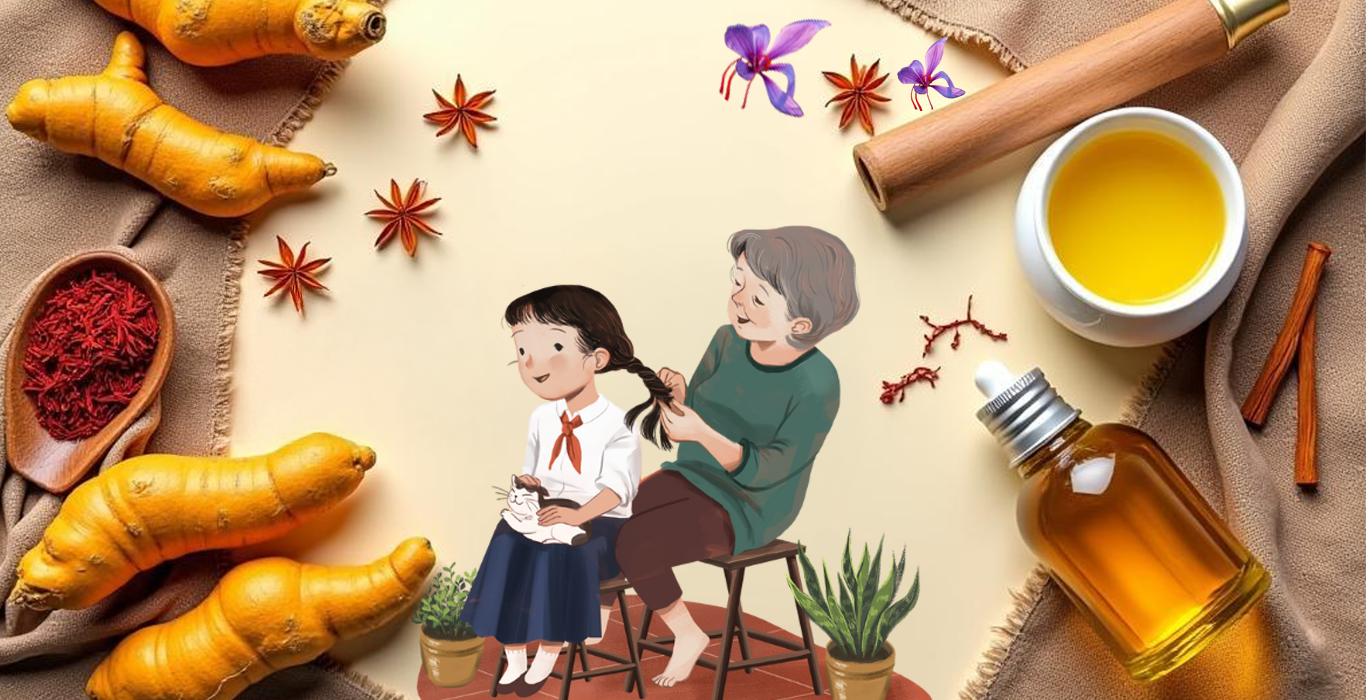Indian Beauty Taboos Reclaimed
The global beauty industry has had its fair share of phases, and K-beauty, with its 10-step rituals, glass skin goals, and snail mucin serums ruled our skincare shelves. However, while we were chasing trends from across the globe, we overlooked something powerful sitting right in our own backyard, age-old Indian beauty secrets that were never truly outdated, just misunderstood.
This August, Innopedia shines a spotlight on four traditional Indian beauty practices, once considered taboos or old-fashioned, now making a remarkable comeback. These rituals are being reimagined for the modern world and proving that sometimes, looking inward is the real glow-up.
Haldi (turmeric) is synonymous with Indian weddings, but its magic goes far beyond the haldi ceremony. Long before it became a pre-wedding ritual, turmeric was used in Indian homes as a skincare powerhouse. Known for its anti-inflammatory, antibacterial, and skin-brightening properties, haldi helps soothe irritation, reduce acne, and bring out a natural glow.
From sloppy do-it-yourself pastes prepared in steel bowls to trendy turmeric serums, cleansers, and overnight masks, this versatile ingredient has effortlessly made its way into the mainstream. Beauty brands are finally bottling what our grandmothers knew all along: haldi is scientifically backed skincare.
Weekend champis may have felt like a chore as kids, but that humble ritual is now being hailed as a wellness essential. Indian hair oiling has always been more than tradition, it's scalp science passed down through generations.
Regular oiling nourishes the roots, strengthens strands, reduces hair fall, and promotes shine. Today, the age-old practice has been reinvented. Instead of thick, greasy oils, we now have lightweight blends infused with amla, coconut, hibiscus, and brahmi, perfect for pre-wash use, overnight repair, or even as daily scalp serums. It’s a timeless remedy adapted for modern hair concerns like pollution, stress, and styling damage.
Before the world discovered vitamin C or niacinamide, Indian skincare relied on chandan (sandalwood) and kesar (saffron) to achieve bright, even-toned skin. Sandalwood is calming and anti-inflammatory, while saffron is rich in antioxidants that help with discoloration and dullness.
Traditionally ground or soaked at home and used as soothing face pastes, these ingredients are now part of luxe skincare lines — think saffron-infused glow oils, sandalwood face mists, and brightening balms.
While Korean beauty may have popularised the term ‘layering,’ Indian skincare has always followed its own intuitive version. A gentle cleanse with gram flour. A spritz of rosewater. A swipe of aloe vera. A few drops of Kumkumadi oil before bed. That’s desi layering, simple, mindful, and rooted in nature.
Now, as beauty trends shift towards minimalism and conscious choices, Indian layering rituals are being rediscovered. These routines focus on fewer, multi-functional products and promote balance over excess. The result? Radiant skin with a soulful ritual that feels less like a routine and more like self-care.
These rituals were never irrelevant, they were just waiting for a resurgence. As modern consumers look for clean, sustainable, and culturally connected beauty, Indian practices offer more than just nostalgia. They deliver real results, backed by both tradition and science.
This isn’t about going backwards. It’s about moving forward with ingredients that have stood the test of time, and rituals that heal more than just skin. So this August, every Wednesday, we reclaim what was always ours not as trends, but as timeless traditions ready to shape the future of skincare and haircare. Join the movement that rediscover your roots.
